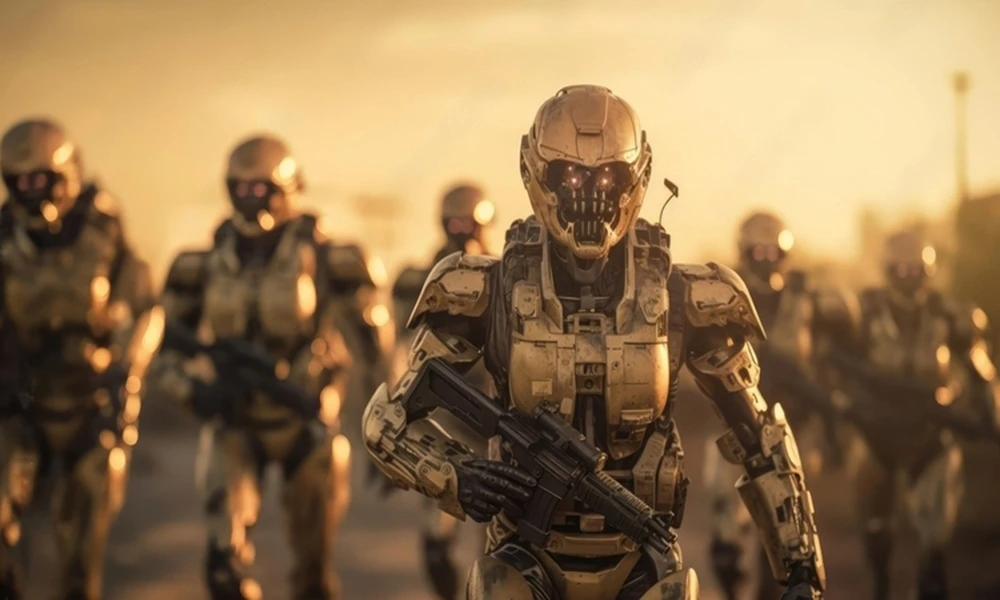Next-Gen Robotics: The Evolution of Unmanned Systems in Defense
Category: Smart Defence Technologies
The evolution of unmanned systems, propelled by advancements in robotics and artificial intelligence, has ushered in a new era in defense strategies. Next-generation robotics are redefining the nature of military operations, offering enhanced capabilities in surveillance, reconnaissance, logistics, and even combat. This article explores the profound impact of next-gen robotics on defense, showcasing their evolution and diverse applications in modern military contexts.
1. The Rise of Unmanned Aerial Vehicles (UAVs): Eyes in the Sky
- Delve into the transformative role of UAVs in defense operations. Explore how next-gen robotics have revolutionized aerial reconnaissance, surveillance, and target acquisition. Discuss the advantages of UAVs in providing real-time situational awareness without exposing human operators to potential risks.
2. Autonomous Ground Vehicles: Reinventing Ground Operations
- Investigate the deployment of autonomous ground vehicles in defense scenarios. Discuss how these robotic systems are reshaping ground logistics, transportation, and perimeter security. Explore examples of next-gen robotics navigating complex terrains and executing tasks traditionally performed by human personnel.
3. Underwater Drones: Submersible Robotics in Naval Operations
- Explore the emergence of underwater drones as critical assets in naval defense. Discuss how next-gen robotics are employed for subsea reconnaissance, mine detection, and monitoring underwater infrastructure. Highlight the challenges and advantages of deploying robotic systems in maritime environments.
4. Swarm Robotics: Collaborative Intelligence on the Battlefield
- Examine the concept of swarm robotics, where multiple autonomous robots collaborate to achieve a common objective. Discuss how swarm robotics enhance the scalability and adaptability of defense operations, from surveillance swarms to coordinated swarm attacks for strategic advantage.
5. Human-Robot Collaboration: Integrating Robotics with Human Forces
- Discuss the evolving paradigm of human-robot collaboration on the battlefield. Explore how next-gen robotics are designed to complement human capabilities, augmenting soldiers with exoskeletons, robotic assistants, and autonomous vehicles. Highlight the integration of robotic systems into joint military operations.
CASE STUDIES
Case Study 1: Predator and Reaper UAVs (United States)
Overview:
- The United States military has been a pioneer in the use of Unmanned Aerial Vehicles (UAVs) for surveillance and combat operations. Notably, the Predator and Reaper UAVs have played a crucial role in next-gen robotics for defense.
Implementation:
- The Predator and Reaper UAVs are armed with advanced sensors and weaponry, transforming them into versatile unmanned systems. They provide persistent surveillance capabilities, allowing for real-time reconnaissance and target tracking. The integration of next-gen robotics has enabled these UAVs to autonomously perform intelligence, surveillance, and reconnaissance (ISR) missions, as well as precision strikes.
Results:
- The deployment of Predator and Reaper UAVs has significantly enhanced the United States’ ability to gather intelligence and conduct targeted military operations. These next-gen robotic systems have demonstrated their effectiveness in reducing risks to human personnel while providing critical information for decision-making on the battlefield. The success of these UAVs highlights the evolving role of unmanned systems in modern military strategies.
Case Study 2: THeTis Unmanned Underwater Vehicle (Greece)
Overview:
- Greece has embraced next-gen robotics in naval defense, particularly with the use of the THeTis Unmanned Underwater Vehicle (UUV)
Implementation:
- The THeTis UUV is designed for underwater surveillance, reconnaissance, and mine countermeasure operations. Equipped with advanced sensors, the UUV autonomously navigates underwater environments, collecting data and providing crucial information for naval operations. The integration of next-gen robotics has enabled Greece to enhance its maritime security capabilities and protect critical underwater infrastructure.
Results:
- The deployment of the THeTis UUV has proven effective in bolstering Greece’s maritime defense capabilities. The next-gen robotic system provides a cost-effective and efficient means of conducting underwater missions without exposing human divers to potential risks. The success of the THeTis UUV demonstrates the value of next-gen robotics in naval operations and underwater defense.

